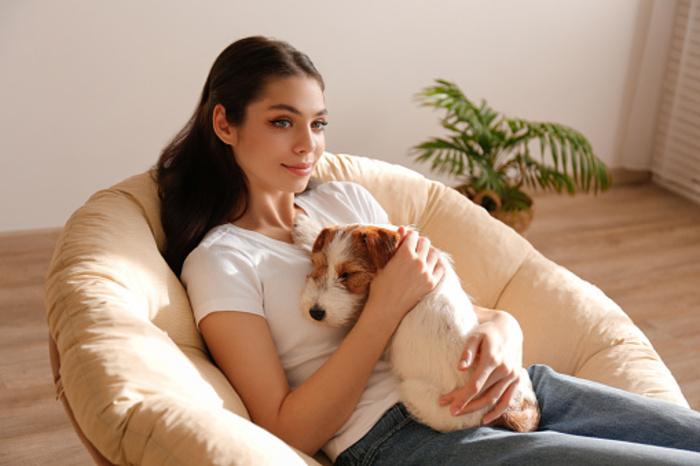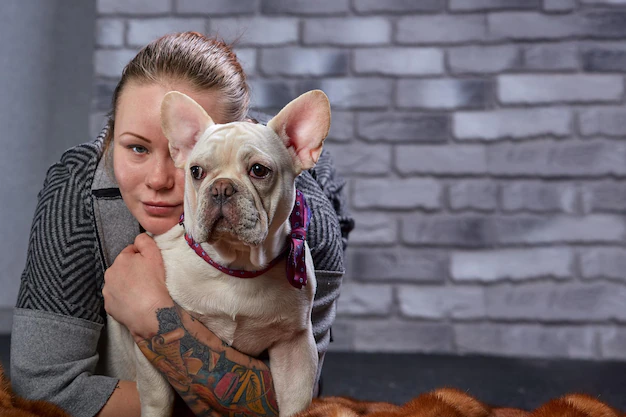
Sometimes we, pet owners, tend to attribute characteristics to our beloved pets, that they do not actually have. We may think that they are much smarter than the other pets, love us much more than other pets, or behave better than others… However, it is an irrefutable fact, that dogs are intelligent creatures, who can acquire many skills, and get attuned to their owners. You may have heard that dogs, especially service dogs are great at picking the emotions of their owner and responding to them. Do we exaggerate, or our paw friends can actually determine our emotions?
Can Dogs Determine When We Are Sad?
You may have noticed that your paw friend starts cuddling to you or tries redirecting your attention by encouraging you to play with them, pet them or walk them, when you are in the mood. These signs show that our dogs respond to our emotions and behavioral changes. Although canines can not determine exactly what “sadness” means, they are able to pick up on our verbal and non-verbal cues and recognize the negative feelings that we may be experiencing.
How Do Dogs Determine That We Are Sad?
According to studies canines use both their hearing and visual skills to recognize positive and negative emotions and behavioral changes. During research, pictures of happy and sad/angry people and dogs were shown to a target group of dogs. Sounds related to these emotions were played as well. Based on the research a conclusion was made that the target group of dogs used both their sight and hearing to determine emotions, as they spent more time watching the pictures that actually matched the playing sound. Although this skill was previously observed in primates only, canines may have also developed it, due to the process of domestication.

Can Dogs Use Only Their Hearing Skills to Recognize When We Are Sad?
Yes, they can. Another research was made, where a food bowl was placed in the middle of a room, and two speakers were put on both sides of the bowl at the same distance. Once the dogs went to the food bowl, the speakers started playing sounds expressing human emotions such as screams (expressing sadness/anger) and laughs (expressing happiness/joy). The dogs were video-recorded so that their reactions could be evaluated later.
The main goal of the research was to determine whether the dogs would turn to the left or the right speaker. It is important to note that the same sound was played from both speakers. You may wonder why this was so essential. There are two reasons for that:
1. Just like in humans, dogs’ right side of the brain is responsible for the left side of the body and vice versa;
2. Another study has revealed that emotions perceived by dogs as positive are being processed in the left part of the brain, and negative emotions-in the right part of the brain.
Research wanted to check whether the dogs will turn to the left or to the right side, which had to indicate how the dogs perceived the sounds- as positive or negative.
The outcome revealed that the sounds related to strong emotions such as sadness, anger and joy, were accurately perceived by dogs, as they turned to the left side when a sound expressing a negative emotion was played. Also, they turned to the right side when a sound expressing a positive emotion was played.
Emotions like “surprise” and “disgust”, considered more controversial and depending on the social context, were not firmly paired by dogs with a positive or negative emotion.

How Dogs’ Great Sense of Smell Help Them Determine Our Emotions
Since our paw friends can differentiate our facial expressions, body language as well as any vocalization that we may use, they can recognize a variety of emotions like fear, anxiety, disappointment and anger.
Dogs can recognize chemical reactions that take place in our bodies even before any physical signs occur. Canines can detect both hormones that we release when we are stressed (cortisol) and when we are happy (dopamine, serotonin). This ability is based on dogs’ great sense of smell which can help them even determine that a woman is pregnant. Based on the high number of olfactory receptors (about 300 million) that dogs have, some breeds can become great alert service dogs. This is especially valid for dogs with long and wide noses, featuring many olfactory cells. Breeds such as the Poodle, the German Shepherd, the Golden/Labrador Retriever, the Border Collie are considered suitable as alert dogs.
What Dogs Do When They Know That You Are Sad?
The more attuned a dog is to his/her owner, the more likely he/she is to take action to comfort and calm down them when they are feeling sad or anxious. Your paw friend may respond to your emotions in different ways, i.e. he/she may start pawing at your leg, nudging you, licking you, jumping on your lap, or putting his/her head on it. Besides the comfort and tactile stimulation that your canine is likely to offer, he/she may try to redirect your attention by initiating a play or encouraging you to take him/her on a walk. Also, he/she may want to just give you some space until you feel better and then come back. Of course, not all dogs’ innate abilities to sense and respond to their owners emotions are at the same level. Some dogs may not respond to your emotional state at all. It is all relative and should be evaluated on a case-by-case basis. As a general rule, we would say, that dogs who have developed a really strong bond with their owners and have gotten attuned to them, are likely to respond to the behavioral and emotional changes they detect. Some dogs may need more specific training to be able to respond to their owner’s emotions in a certain way, i.e. to paw you when you feel sad or stressed.
We believe that all dogs are unique and should be evaluated as individuals. Our paw friends provide us with support and love and should receive the same in return.











